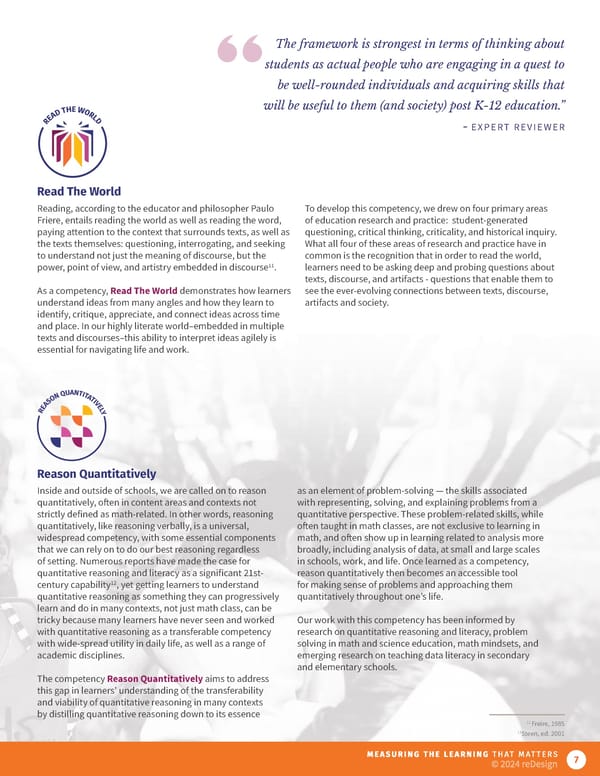The framework is strongest in terms of thinking about students as actual people who are engaging in a quest to be well-rounded individuals and acquiring skills that will be useful to them (and society) post K-12 education.” - EXPERT REVIEWER Read The World Reading, according to the educator and philosopher Paulo To develop this competency, we drew on four primary areas Friere, entails reading the world as well as reading the word, of education research and practice: student-generated paying attention to the context that surrounds texts, as well as questioning, critical thinking, criticality, and historical inquiry. the texts themselves: questioning, interrogating, and seeking What all four of these areas of research and practice have in to understand not just the meaning of discourse, but the common is the recognition that in order to read the world, 11 power, point of view, and artistry embedded in discourse . learners need to be asking deep and probing questions about texts, discourse, and artifacts - questions that enable them to As a competency, Read The World demonstrates how learners see the ever-evolving connections between texts, discourse, understand ideas from many angles and how they learn to artifacts and society. identify, critique, appreciate, and connect ideas across time and place. In our highly literate world–embedded in multiple texts and discourses–this ability to interpret ideas agilely is essential for navigating life and work. Reason Quantitatively Inside and outside of schools, we are called on to reason as an element of problem-solving — the skills associated quantitatively, o昀琀en in content areas and contexts not with representing, solving, and explaining problems from a strictly defined as math-related. In other words, reasoning quantitative perspective. These problem-related skills, while quantitatively, like reasoning verbally, is a universal, o昀琀en taught in math classes, are not exclusive to learning in widespread competency, with some essential components math, and o昀琀en show up in learning related to analysis more that we can rely on to do our best reasoning regardless broadly, including analysis of data, at small and large scales of setting. Numerous reports have made the case for in schools, work, and life. Once learned as a competency, quantitative reasoning and literacy as a significant 21st- reason quantitatively then becomes an accessible tool 12 century capability , yet getting learners to understand for making sense of problems and approaching them quantitative reasoning as something they can progressively quantitatively throughout one’s life. learn and do in many contexts, not just math class, can be tricky because many learners have never seen and worked Our work with this competency has been informed by with quantitative reasoning as a transferable competency research on quantitative reasoning and literacy, problem with wide-spread utility in daily life, as well as a range of solving in math and science education, math mindsets, and academic disciplines. emerging research on teaching data literacy in secondary and elementary schools. The competency Reason Quantitatively aims to address this gap in learners’ understanding of the transferability and viability of quantitative reasoning in many contexts by distilling quantitative reasoning down to its essence 11 Freire, 1985 12Steen, ed. 2001 7
 Dig into the Why Page 6 Page 8
Dig into the Why Page 6 Page 8
